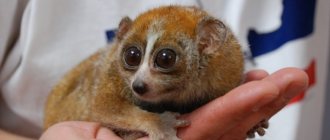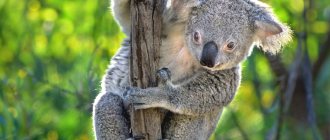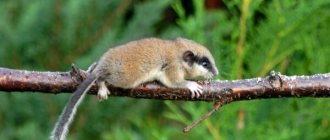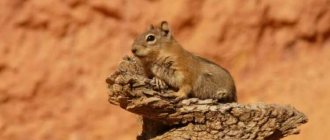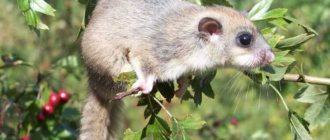One of the most interesting amphibians, which is sometimes kept as a pet, is a small frog - the red-bellied toad. It got its name from the lumpy skin on its red abdomen with dark spots, reminiscent of solidified volcanic flows. There is a popular belief that the toad lives near fire-breathing mountains (earth vents). Unka, kumka - these frogs are also called so for the characteristic sounds that males make during the breeding season.
Description
The size of the frog usually does not exceed 6 cm. Moreover, the females are slightly larger than the males. The red-bellied toad has a unique appearance. The description of the unusual coloring of these amphibians deserves special attention. The upper part of the frog is gray or almost black, covered with dark green spots. The red or orange abdomen has bluish-black spots with many white dots. The bright red color does not exceed the dark color in area. There are many small red spots on the lower surface of the paws. With this coloring, the frog warns other animals that hunting it is dangerous and can lead to poisoning. It is known that the skin of the toad is capable of secreting the toxic substance frinolicin. It covers the frog's entire body in times of danger, protecting it from enemies.
There are membranes only on the hind legs of the toaded toad, and absent on the front ones. Another distinctive feature of this amazing frog is its pupils. They have an unusual triangular shape, reminiscent of hearts.
Organization of wintering
Preparations for the winter period should begin in December. For this:
- from mid-November, the duration of the photoperiod and the temperature in the aquaterrarium are gradually reduced. Until the beginning of December, the artificial heater is turned off completely;
- after another 7 days, the amphibian is moved from the terrarium to a separate container, which is filled with peat - sphagnum;
- The container is placed in a cool place where the temperature does not exceed +15 degrees. After three days, the toad is transferred to the refrigerator and left at a temperature of +5-8 degrees.
The hibernation period lasts about two months.
Important! It is necessary to bring the toad out of hibernation strictly in the reverse order.
Habitat and distribution
This type of frog is most common in Central Europe (up to Germany and Austria) and in Eastern Europe - up to the Urals, including the Kirov region, Udmurtia and Bashkiria. The northwestern border of the toad's distribution runs from the south of Denmark and Sweden, and the southern border runs through the northwestern part of Turkey, Krasnodar and Stavropol regions.
The red-bellied firebird prefers to settle in shallow, well-warmed, stagnant bodies of water. It can often be found in small lakes, ponds, swamps and ditches with muddy bottoms, especially where there is a lot of duckweed and riparian vegetation. Occasionally you can find this frog in semi-flowing backwaters of small rivers. It can move from one body of water to another, traveling on land over a distance of up to 700 meters.
Habitat
In its natural environment, the toad lives almost throughout Europe, eastern and northern Asia. Large populations of the amphibian have been recorded in Korea, China, Turkey, and Germany. Frogs have taken root well in the European part of the Russian Federation: Yaroslavl, Pskov and Tver regions.
The optimal habitat is small bodies of water with standing water and thickets, for example, lakes, backwaters, ponds, rivers and swamps. They avoid rivers with fast currents and sandy banks. They love warm weather conditions, prefer to swim in water with a temperature of 18-20 degrees.
The terrarium can contain such animals as: giant Achatina, tarantula spider, crocodile, black widow, iguana, tarantula, chameleon, salamander, monitor lizard, marsh turtle, ciliated bananaeater, sand boa, Madagascar cockroach, leopard gecko, corn snake, scolopendra and gecko .
Uncas are often found in reservoirs located within city limits.
Lifestyle
The red-bellied fire frog is primarily an aquatic animal. It is active at air temperatures from 10 to 30⁰С. Almost the entire warm season of the year is spent in the reservoir, and in October–November it goes to winter, which it spends, as a rule, on land. Rodent burrows and sandy holes along the banks of reservoirs serve as shelter; sometimes the toad's wintering place is found under residential buildings and in cellars. Hibernation usually lasts 150 days - until March or April. 2 weeks after its end, the frogs begin their breeding season.
Features of the toad's behavior
The red-bellied firebird very rarely comes onto land. She spends most of her life spread out on the surface of the reservoir, occasionally swimming, pushing off with her hind legs. It most often comes ashore from puddles, the water in which is very hot. Leads a mainly diurnal lifestyle.
It migrates not far from reservoirs and only when juveniles settle, to and from wintering grounds, and less often when the reservoir dries out. Usually it does not move further than 3-5 meters from the reservoir, and at the slightest danger it tries to go into the water with small jumps, and if it succeeds, it dives to the bottom and buries itself in the silt.
Nutrition
Under natural conditions, the red-bellied firebird (there is a photo of the frog in this article) feeds on small invertebrates and insects - worms, dragonflies, beetles, etc. The diet largely depends on the habitat. Thus, in the Volga region and Kazakhstan, various beetles predominate, in the Voronezh region - earthworms, and in the Caucasus, the main food is dipteran larvae. Among frogs of this species, cannibalism sometimes occurs, when large individuals eat small ones.
When keeping a toad in a terrarium or aquarium, it can be fed with bloodworms, mealworms, tubifex, crickets, small daphnia, as well as special food sold in pet stores. The diet of pet frogs must include vitamin and mineral supplements. Young animals are fed daily, but adults only need to be given food once every two days.
Diet
Red-bellied toads feed on beetles and their larvae, mosquito larvae, water burros, earthworms and other invertebrates. The composition of food varies by biotype, but water beetles, mollusks and partly mosquito larvae are constant food items. The ability to obtain terrestrial forms is more limited than that of frogs: since toads do not have an ejectable tongue, their food consists mainly of aquatic forms of invertebrates. During the breeding season, these amphibians, especially females, hardly feed.
Reproduction
The red-bellied firebird becomes a sexually mature individual only in the second, and sometimes even in the fourth year of life. The breeding season is very long and lasts all summer. In shallow areas of the reservoir, where there is no current, the female lays eggs at night, which are attached to the stems of plants and algae. On average, the number of eggs laid per season is 300 pieces.
After about 10 days, tadpoles are born. They have a length of 3 to 5 mm and a wide caudal fin, with the help of which they can move quite a considerable distance. It takes approximately 3 months for them to transform into a frog.
Listen to the voice of the red-bellied firebird
Larval development continues, after which the tadpole turns into a frog. The young remain in the water or in close proximity to it. They reach sexual maturity in the 2-4th year of life. In nature, the life expectancy of red-bellied firebirds is on average 12 years, and in captivity the record long-liver lived up to 29 years. Adult toads consume both terrestrial and aquatic invertebrates.
Fire-bellied toads live up to 29 years - this is a record among frogs.
Captivity
The toaded toad feels great in a home terrarium. If in the natural environment frogs rarely live long, then in captivity their life expectancy is 10–15 years, or even more. Under no circumstances should fire-bellied toads be placed in the same terrarium with other amphibians, as their poison will be destructive to the neighbors. It is important to comply with certain requirements that experts place on keeping these animals:
- The volume of the terrarium should not be less than 30 liters. It should contain a small pond up to 6 cm deep and a piece of land.
- The presence of downward heating. The temperature should be maintained at 20–26⁰С during the daytime and 16–20⁰С at night.
- The soil consists of a drainage layer, soil and a small amount of moss. It is best to cover the surface of the land with sphagnum.
- It is necessary to place a raft on the surface of the water on which the frog can climb out.
- Residents of the terrarium definitely need greenery. These can be aquarium plants in pots (anubias, cryptocorynes, etc.) or free-floating salvinia, richia, and elodea on the surface.
- The top of the terrarium is covered with a net so that its inhabitants cannot jump out.
With good care, a frog such as the red-bellied toad can live in the house for quite a long time.
Character and lifestyle of the toaded toad
The life of these amphibians takes place in shallow waters, which during favorable periods of the year are perfectly warmed by the rays of the sun. Fire-bellied toads are extremely active in warm months, when air temperatures do not change and remain within 18-20 °C, which is the optimal condition for their comfortable existence.
In late autumn, they look for reliable shelters, which are various depressions in the ground, holes and abandoned rodent burrows, where they hibernate, which lasts until the arrival of spring (late March - early April).
Despite the methods of effective defense that nature has provided to the toad, and the poisonous glands, amphibians still often become prey for various animals: ferrets, hedgehogs, herons, pond frogs, vipers and snakes.
However, it should be noted that the enemies of fire toads still feed on them extremely reluctantly, preferring other foods and consuming this tasteless and unhealthy food only when absolutely necessary. The poison of fire toads does not pose any danger to humans.
On the contrary, the caustic mucus secreted by these amphibians, containing bactericidal peptides, has many useful disinfectant properties that have been used by people since ancient times.
Our ancestors noticed that if a toad (or holodushka, as they called it) is thrown into a jar of milk, then it does not sour for a long time and retains its beneficial properties. However, if the toads come into contact with the eyes, they can cause discomfort and burning.
You can buy toads in pet stores and aquarium online stores for about 400 rubles. They must be kept in specially equipped terrariums with lamps, where 1-2 individuals are usually placed, but group keeping is also possible.
Interesting Facts
These frogs behave quite unusually. The toad's tongue has some structural features. Thanks to this, when hunting for insects, she does not throw it forward, as other frogs do, but jumps on the prey, opening her mouth wide.
At the sight of a predator, the toad turns over on its back, showing its orange belly. This is a signal that it is poisonous and it is better to stay away from it.
During the mating season, the males settle down in the depths of the reservoir and begin to beat the water with their paws with all their might, showing their rivals that the territory is occupied.
Biologists carefully monitor these amphibians, because they are quite rare and are listed in the Red Book.
Varieties
Scientists know several types of toads, which vary depending on their behavior, color, and place of residence.
Far Eastern Fire Toad
This species lives in the Far East and can also be found in Korea and the People's Republic of China. If you look at the coloring of this toad, you will notice that it is similar to its red-bellied sister. However, the belly of the Far Eastern frog has a bright orange hue, and the spots are not so large.
The animal is predominantly nocturnal. Feeds on insects. It chooses marshy areas to live.
The belly of the Far Eastern frog has a bright orange hue.
Yellow-bellied Firebird
This resident of the Carpathians is also often found in Central Europe. And some evidence suggests that it is found on the eastern shores of European bodies of water. Prefers to settle on hills, the height of which is 500 m above sea level.
Diseases and their prevention
The toaded firebird, like any other amphibian, is susceptible to some diseases. Owners should be aware of these nuances before getting such a pet.
- Oral abrasions. Frogs are not very careful, so they develop various injuries in the mouth area. In order to quickly heal the wound and not get severe inflammation, antibiotic therapy is required. Frogs make compresses or rub in ointment. It is important to isolate this individual from other representatives of the aquarium or terrarium so that it has time to fully heal.
Frogs are not careful, so they may develop damage in the mouth area
- Helminthic lesion. More often this happens as a result of poor quality nutrition or dirty water. It can be cured with the help of special powders that are added to food.
There are other diseases that can affect the toad. But much less frequently than those listed above.
Appearance
The red-bellied toad looks like a small toad. The tongue of fire-bellied toads is thick, disc-shaped, attached to the lower palate, which is why they received the name round-tongued. The eardrum is missing. It is replaced by the bones of the lower jaw, closely adjacent to the auditory ossicles. Little toads listen while lying on the ground or bottom, pressing their heads to the ground. They hear predominantly low frequencies. They run poorly. The ends of the fingers are light on top. The lower leg is approximately equal to or longer than the foot. The toes of the hind legs are webbed. Females are larger than males and their skin is smoother. The male differs from the female by the presence of black nuptial calluses on the 1st and 2nd toes of the front legs. Males have internal resonators. The toad's head is small and rounded. The eyes are large, the pupils are triangular or heart-shaped. The iris of the eye is bronze. The belly is brightly colored, smooth, with small warts near the cloaca. Skin of the back with very high and sharp tubercles. The transverse process of the sacral vertebra is greatly expanded.
Natural enemies
Thanks to its poisonousness, the frog can boast that it defends itself from predators. A fairly large number of animals hunt for fire toads.
Among the reptiles are marsh turtles, grass snakes, and vipers. Newts, herons, storks, ducks, and rodents are not averse to feasting on frogs. The bright color of the abdomen makes it possible to scare away enemies, and those who are not afraid to come closer may receive burns or die from poison.
Red-bellied Firebird Bombina bombina
3196
The breeding season begins in March - April. Females lay 80-300 eggs in portions of 2-30 pieces. After a week, tadpoles appear. Metamorphosis ends after 3 months. They become sexually mature at 2-3 years of age. Sometimes red-bellied toads are kept in terrariums, where they can live up to 20 years.
The most famous and widespread is the red-bellied toad. This is a small frog: its body length does not exceed 6 cm. On top it is colored inconspicuously - a gray background of various shades with darker, sometimes greenish, spots and stains. But the ventral side is unusually bright - red or orange-red with a bluish-black marbled pattern. Males differ from females in their smaller body size, relatively larger head, and the presence of internal resonators. During the mating season, they develop well-defined black mating calluses on the first and second toes of the front paws and on the forearm.
The skin glands of fire-bellied toads secrete a poisonous foamy secretion - more poisonous than that of many other amphibians. In addition to this, fire toads have developed special behavior to protect themselves from enemies. When exposed to danger, the toad throws its legs over its back so that the red coloring of their insides becomes visible, or it turns over onto its back.
The red-bellied firebird is a fairly common species in Central and Eastern Europe. In Russia, it is widespread in the center of the European part, in the south it reaches the Ciscaucasia, in the east - to the Central Urals. This species leads a predominantly aquatic lifestyle, and if in some part of its range it is found on land, then only in the most humid places. The red-bellied firebird is a lowland species that lives in steppes, deciduous and mixed forests. She usually chooses bodies of water with stagnant, well-heated water and a clay bottom - ditches, small lakes, ponds, rice fields, swamps. Active toaded toads are found in water with temperatures ranging from +10 to +30°C, however, the preferred water temperature is +21°C. Usually these beautiful frogs are not numerous, but in the most favorable places for them you can find significant concentrations of them. Despite their close attachment to water, fire-bellied toads can travel from one body of water to another over distances of several hundred meters, but this usually happens at night and only when humidity is high.
Red-bellied fire-bellied toads begin breeding in April-May at water temperatures above +14°C. The males begin their mating “singing” - they methodically emit short monotonous sounds - “unk-unk-unk”. Such a trill can include up to 40 signals per minute; in warmer water their frequency is higher than in cool water. The “singing” male swims on the surface of the water, but can also “sink” under water. The most intense “singing” of males is observed in the central part of the range at the end of April and mid-May, although toads lay eggs throughout the summer.
The female lays up to 300 eggs in portions of 2-80 pieces. To do this, she selects well-warmed shallow areas with aquatic vegetation, to which she attaches the eggs. After 4-12 days - depending on the water temperature - tadpoles hatch, only about five millimeters long. The tadpoles of fire-bellied toads (unlike the tadpoles of other tailless amphibians found among us) are good swimmers and real hunters: they actively swim in the water column and do not scrape off food, but catch the smallest aquatic animals - protozoa, rotifers, copepods, and also feed on algae and other aquatic plants. Larval development lasts about two months, after which metamorphosis occurs. Small toads remain in the water or in close proximity to it. These amphibians reach sexual maturity in the second to fourth year of life. In nature, they can live up to 12 years; in captivity, the record for the longevity of the toad is 29 years.
Adults feed on both aquatic and terrestrial invertebrates.
Red-bellied fire-bellied toads leave for the winter in late autumn. They hide in the burrows of other animals, in loose soil, under leaves and dead wood. Wintering sites are sometimes located at a distance of up to 500 meters from the reservoir; in some cases, quite a lot of toads accumulate in them - up to 70 pieces. They can also spend the winter in water bodies, buried in silt. Sometimes many young fish die because there are not always enough nutrients to survive the long winter.
The red-bellied firebird is one of the common and fairly widespread species of amphibians in Russia. However, its numbers are declining in many places, and in some places it has already disappeared. Therefore, the species needs protection. It is included in the Red Book of the Moscow Region.
(V.F. Orlova, D.V. Semenov “Nature of Russia: animal life. Amphibians and reptiles”).
Notes
- Kuzmin S. L.
Amphibians of the former USSR / Reviewers: Academician of the Russian Academy of Sciences E. I. Vorobyova, Ph.D. n. S. M. Lyapkov. - M.: Partnership of Scientific Publications KMK, 2012. - P. 106. - 1000 copies. — ISBN 978-5-87317-871-1. - Source of Russian names: Ananyeva N. B., Borkin L. Ya., Darevsky I. S., Orlov N. L.
Five-language dictionary of animal names. Amphibians and reptiles. Latin, Russian, English, German, French. / under the general editorship of academician. V. E. Sokolova. - M.: Rus. lang., 1988. - P. 51. - 10,500 copies. — ISBN 5-200-00232-X. - ↑ 1 2 3 Frost, Darrel R.
Bombinatoridae
(unspecified)
.
Amphibian Species of the World: an Online Reference.
Version 6.0 . American Museum of Natural History (2014). - ↑ 1 2
Laurie J. Vitt und Janalee P. Caldwell:
Herpetology: An Introductory Biology of Amphibians and Reptiles.
Academic Press, 2013, ISBN 978-0123869197, Page 475-476. - Amphibia Web.
Bombinatoridae
(undefined)
.
Provides information on amphibian declines, natural history, conservation, and taxonomy
(2017).
Feeding
Organizing the nutrition of these amphibians does not pose any particular problems.
The food can be bloodworms, crickets, cockroaches, tubifex, a small worm (mealworm, for example). Once a month, experts recommend giving a commercial vitamin concentrate for amphibians. This periodic addition to the daily diet helps maintain the animal’s immunity. Adults can be given food every other day. Young animals are fed the same thing, but the food fraction should be smaller and feeding should be done daily. It is advisable to add calcium powder to your food at this stage. Crushed eggshells work best.



